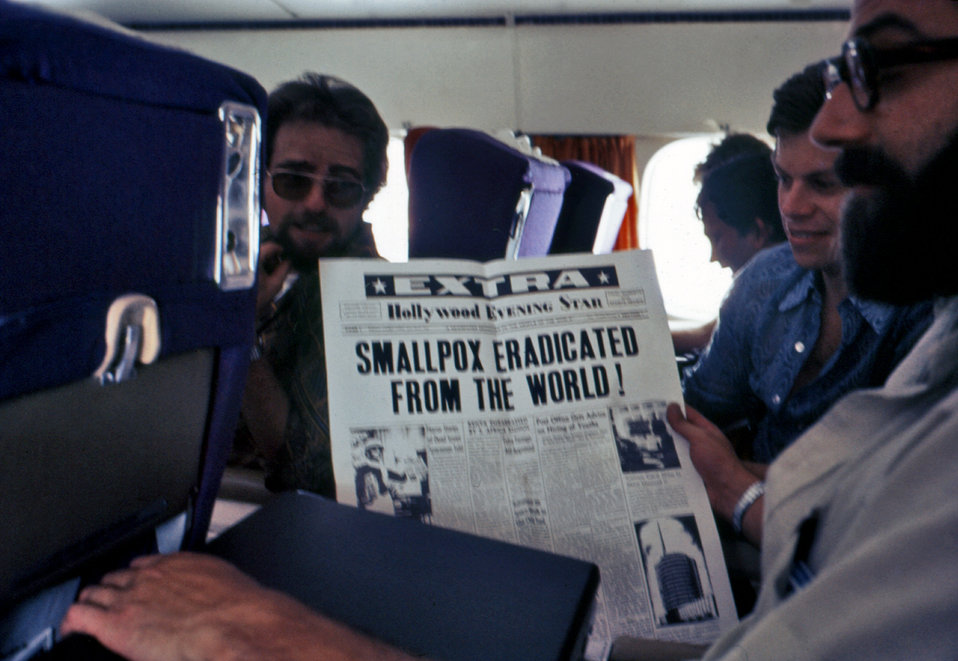In front of the World Health Organisation (WHO) headquarters in Geneva, there stands a statue: three figures in a line, with one kneeling, administering a vaccine to the first person in the queue. The statue commemorates the 30th anniversary of the eradication of the smallpox virus, one of the deadliest diseases known to humans throughout history. It was a highly contagious and infectious disease with a 20% to 30% mortality rate, and survivors were marked with deep pitted scarring prominent on the face. With successful vaccination programmes and campaigns led by the WHO, smallpox was declared eradicated in 1980. Headlines in magazines and newspapers all over the world read: “Smallpox is dead!” But although smallpox is no longer considered a public health threat, it still exists. Stockpiles of the virus are maintained at the headquarters of the Centre for Disease Control in Atlanta, and at a biotechnology institute in Novosibirsk, Russia.
“But now, global warming is gradually exposing older permafrost layers and the ancient threats that lurk beneath.”
Until recently, the only way smallpox could possibly re-emerge was through a threat of bioterrorism. However, this re-emergence may surface sooner than anticipated. A direct result of the catastrophic effect of climate change is the thawing of permafrost at an accelerating rate in Siberia, Russia. Under normal circumstances, superficial permafrost layers about 50cm deep melt every summer. But now, global warming is gradually exposing older permafrost layers and the ancient threats that lurk beneath.
Permafrost is key to the preservation of exoskeletons and artefacts in Arctic and subarctic regions. Regions in Siberia have already reported outbreaks of anthrax disease from dead reindeer carcasses that were revealed from thawing permafrost layers. Rising temperatures have also caused the north shore of Siberia to become more easily accessible by sea. As a result, industrial exploitation, including mining for gold and minerals, and drilling for oil and natural gas, is now becoming profitable. Ancient layers and cemeteries could be exposed by the digging involved in mining and drilling operations. If viable smallpox virions are present, this could cause a pandemic to occur.
Local tribes endemic to Arctic regions have been buried in permafrost for centuries, so it is conceivable that smallpox could be unleashed, and essentially “be back from the dead”. Frozen permafrost soil is the perfect place for bacteria to remain alive for very long periods of time. Viruses, too, can survive for long periods of time in ice, with French researcher Jean-Michel Claverie finding still-infectious viruses in 30,000 year old permafrost in 2014 and 2015. Although the viruses only infected amoeba, it suggests that there is potential for the re-emergence of viruses that can infect humans. Researchers have found bodies with sores characteristic of the marks left by smallpox, and while they did not find the smallpox virus itself, they have detected fragments of it in its DNA.
“Re-emergence of ancient and eradicated diseases could lead to such pandemics seen in the 1918 influenza outbreak.”
Scientists have yet to successfully attempt to resurrect so-called “zombie pathogens” that are harmful to humans, and the odds that any viruses that infect humans would survive after being frozen for decades is very small. However, entertaining the prospect for a minute, exposure and contact with numerous corpses of smallpox victims could possess a litany of problems for the world, since the smallpox vaccine was phased out following the eradication of the disease. Re-emergence of ancient and eradicated diseases could lead to such pandemics seen in the 1918 influenza outbreak.
The re-emergence of smallpox would deal a catastrophic blow to the wellbeing of individuals around the world and every effort should be made to prevent the potential return of the vicious virus. However, the potential reoccurrence of historic smallpox outbreaks will depend solely on the speed and trajectory of climate change.






